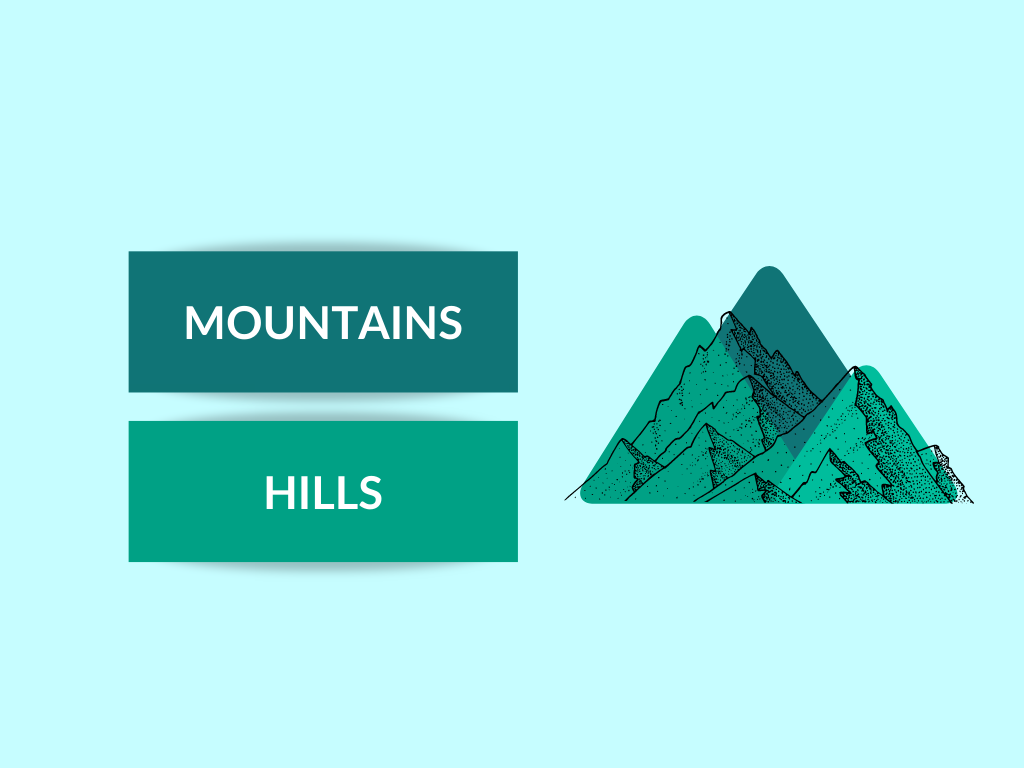What is a Hill?
In general, we think of hills as having a lower elevation than a mountain and a more rounded/mound shape than a distinct peak.
Hills may have once been mountains that were worn down by erosion over many thousands of years. Contrariwise, many mountains—such as the Himalayas in Asia—were created by tectonic faults and would have, at one time, been what we might now consider hills.
What is a Mountain?
Though a mountain is typically taller than a hill, there is no official height designation. An abrupt difference in local topography is often described as a mountain, and such features will often have “mount” or “mountain” in their name; examples include Mount Everest and Mount Washington.
Differences between Hills and Mountains are:
| HILLS | MOUNTAINS |
|---|---|
| A natural mound of earth created either by faulting or erosion | A natural mound of earth created by faulting |
| A "bump" in the landscape, rising gradually from its surroundings | A very steep rise in the landscape that is often abrupt in comparison to its surroundings |
| Less than 2,000 feet high2 | A minimum height of just over 2,000 feet2 |
| A rounded top with no well-defined summit | A steep slope and a defined summit or peak |
| Often unnamed | Often has a name |
| Easy to climb | Depending on the slopes and elevation, mountains can be a challenge to climb |
CONCLUSION:
We can easily conclude about the Differences between Hills and Mountains that is hills are easier to climb than mountains. They are less steep and not as high. But, like a mountain, a hill will usually have an obvious summit, which is its highest point.
Also, Read Differences between Magma and Lava.




